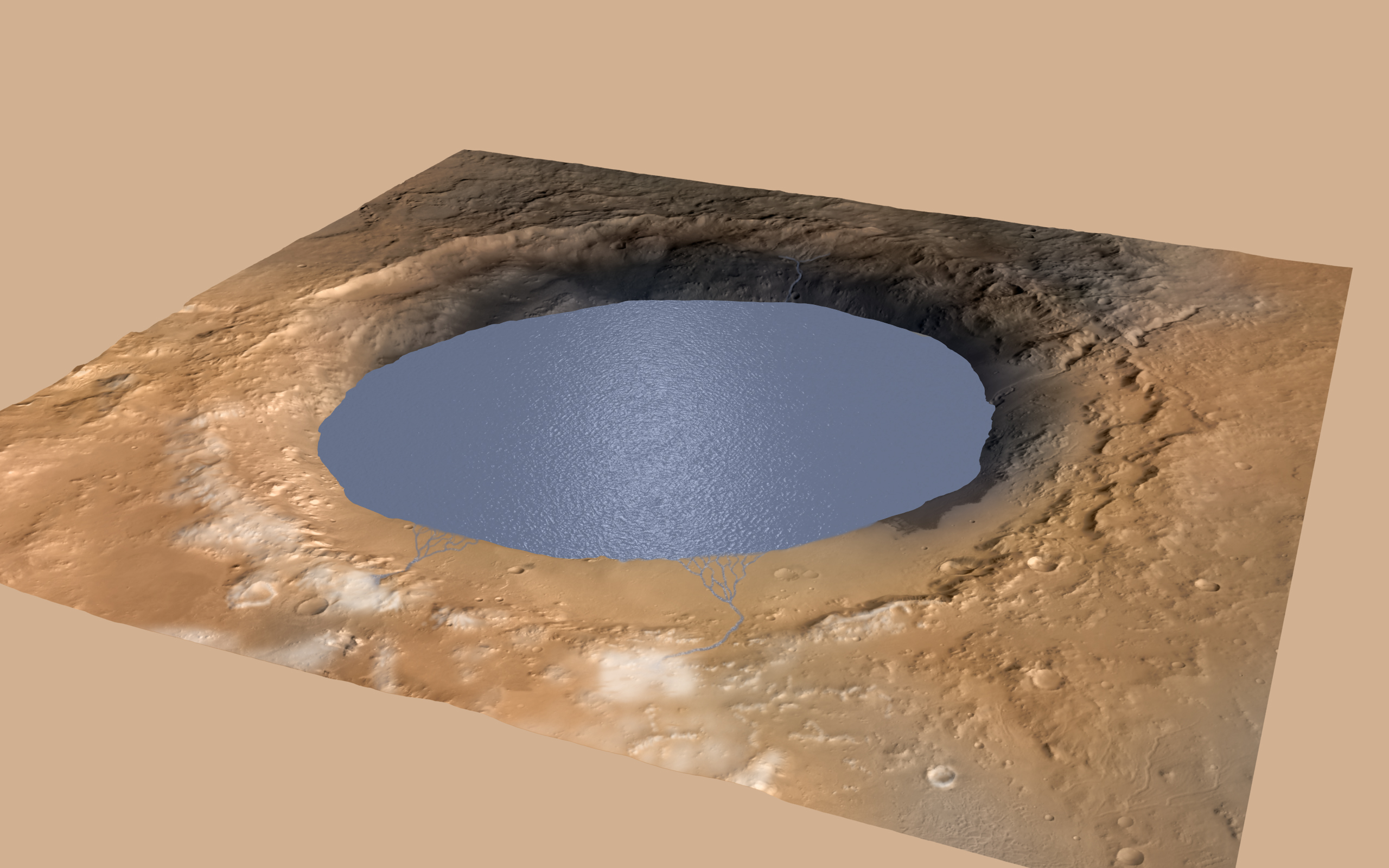
At a press conference held earlier this month, NASA revealed findings obtained from its Curiosity rover suggesting that the Gale Crater, the site of the robot’s latest two-year expedition, may have once been a circular lake that filled and refilled with runoff over a period of ten millions years. What’s more, the Red Planet may have maintained a climate close to that of the Earth, demonstrating how the primal forces of an earlier Mars carved out the slopes of the two-mile high Mount Sharp from sediments deposited in the bed of Gale Crater.
“If our hypothesis for Mount Sharp holds up, it challenges the notion that warm and wet conditions were transient, local, or only underground on Mars,” said Ashwin Vasavada, Curiosity deputy project scientist at NASA's Jet Propulsion Laboratory in Pasadena. Meaning, the Martian environment may have actually resembled that of the Earth’s and included an atmosphere warm and dense enough to permit not just the presence of liquid water, but its flow and convergence into lakes with layers of sedimentary deposits.
“We are making headway in solving the mystery of Mount Sharp,” said Curiosity Project Scientist John Grotzinger of the California Institute of Technology in Pasadena, California. “Where there's now a mountain, there may have once been a series of lakes.”
Prior to Curiosity’s exploration of the Mount Sharp’s lower sedimentary deposits, scientists remained baffled as to why the 3-mile high mountain was situated within a crater. But now, the rover’s firsthand account of a section of rock 500 feet high (called the Murray formation) reveals hundreds of rock layers made up of alternating lake, river, and wind deposits, that could only have congregated through the repeated filling and evaporation of a Martian lake, larger than any previously examined. It’s believed that the sediment accrued in much the same way rivers on Earth carry sand and silt to lakes, depositing sediments at the mouth of river to form deltas.
“The great thing about a lake that occurs repeatedly, over and over, is that each time it comes back it is another experiment to tell you how the environment works,” Grotzinger said. “As Curiosity climbs higher on Mount Sharp, we will have a series of experiments to show patterns in how the atmosphere and the water and the sediments interact. We may see how the chemistry changed in the lakes over time. This is a hypothesis supported by what we have observed so far, providing a framework for testing in the coming year.”
Despite evidence from prior Mars mission suggesting a wet environment on ancient Mars, modeling this type of environment could not identify any factors that would have produced a warm enough climate for stable water to collect on its surface. Instead, the sedimentary rocks discovery presidents evidence of small, ancient deltas repeatedly stacking on top of one another.
Advertisement
Learn more about Electronic Products Magazine





